
 |
 |
||||||||
|
|
Lessons Menu - Lesson 9 - Lesson 10 - Lesson 11 - Lesson 12 - Lesson 13 - Lesson 14 - Lesson 15 - Lesson 16 |
| Lesson Plan 15 - Agriculture CLUBS, FAIRS, AND SHOWS |
download
lesson15.pdf |
|
|
OVERVIEW STUDENT OBJECTIVES CALIFORNIA HISTORY STANDARDS BACKGROUND
ARTICLE 15 STUDENT
ACTIVITY SHEET 15 AND KEY |
ADDITIONAL ITEMS AVAILABLE IN THIS LESSON PLAN: |
|
DOCUMENTS TO DISCUSS
(view online or print screen) |
||||
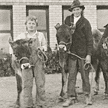 view large image |
1. Jersey Calf Club
of Galt takes delivery of calves [1920] Two boys and two girls taking delivery of four calves to raise for the Jersey Calf Club of Galt. |
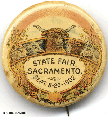 view large image |
2. California State
Fair button [1902] A button badge worn on the lapel, features sheep, pigs, cattle, and horses on the top of the button and fruits and vegetables on the bottom half. |
|
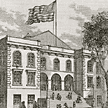 view large image |
3. Agricultural Hall [1859] This brick building at 6th and M streets in Sacramento became the official site of the California State Fair. |
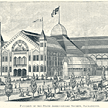 view large image |
4. Pavilion of the
State Agricultural Society [ca. 1912] This larger pavilion was the next home of the State Fair. |
|
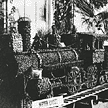 view large image |
5. Citrus Fair display [1891] Oranges on display at the Citrus Fair, Marysville, 1891. |
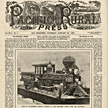 download PDF file |
6. Sacramento County
exhibit at the Northern Citrus Fair [1893] Illustration from front page of the January 28, 1893 issue of the Pacific Rural Press. The Northern Citrus Fair was held at the Mechanics' Institute pavilion in San Francisco. |
|
|
INSTRUCTIONS 2. Read Background Article 15. You may wish to read it to your students or have them read it by themselves. Discuss any questions that they may have. 3. Show and discuss Document 1, Jersey Calf Club of Galt takes delivery of calves. Explain that the children in the picture are being given the calves to raise. Ask students why the children would be given calves. What jobs do they think would be involved in raising a calf? Find out if anyone in your class belongs to a club such as 4-H. What kind of activities does their club sponsor? Find out if any of your students have exhibited something at a fair or raised a livestock animal. If so, have them describe the experience. 4. Ask students which of the documents in the set is an example of ephemera. They should be able to identify the souvenir button. Show and discuss Document 2, California State Fair button. The button can be called ephemera because it probably was not intended to be saved for many years. Have students calculate the age of the 1902 button. (at least 101 years) Ask students if they have saved any souvenir buttons from modern events. 5. Document 3, Agricultural Hall, Sacramento and Document 4, Pavilion of the State Agricultural Society. Tell students that these buildings were built for the California State Fair in Sacramento. Have them decide which pavilion was built first. How was the newer pavilion different? If any of your students have been to the current State Fair location, have them describe how the site looks today and what type of activities are available. 6. Document 5, Citrus Fair display and Document 6, Sacramento County exhibit at the Northern Citrus Fair. Ask students to decide what materials were used to create the displays in the photos. (oranges) Discuss what might be seen at a citrus fair, why they were started, and why people enjoyed them. Ask if any of your students have attended a modern fair where fruits and vegetables were used to build displays. If so, have them describe what they saw. Read the article in Document 6, which discusses the appropriateness of a railroad theme to represent Sacramento County at the 1893 Citrus Fair. Do the students agree with the article's author? Would this theme still be appropriate today? What other displays could be constructed of oranges to represent Sacramento County or your own county. Ask students what they think the author means by the dire ills [that would take place] if the orange horse should take on the functions of the iron horse whose semblance he assumes? 7. Search the Sacramento History Online database together using the keyword and advanced searches, or let students explore the database independently. What other fair displays can they discover? 8. Give students Activity Sheet 15: Clubs, Fairs, and Shows (printed from the PDF file). After they have finished the activity, discuss their answers as a group. FOLLOW-UP 2. Imagine that you attended the Marysville Citrus Fair in 1891 or the California State Fair in 1902. Write a postcard or letter to a friend describing what you saw there. 3. Design a display for a citrus fair that represents your community. Determine the size of your display and estimate how many oranges or other fruits would be required. Build a scale model or make a drawing of your display. (Colored press-on dots could be used to represent oranges). Have a mini-fair with your classmates, and write an account of the fair as if you were a reporter of the day. 4. Make a poster for a citrus fair or State Fair. You can see historical examples on the California State Library Foundation web site REFERENCES AND RESOURCES Jelinek, L.J. Harvest empire: A history of California
agriculture. RELATED LINKS California Farm Bureau Federation History California Farm Bureau Federation History - 60th Anniversary
California State Library Foundation posters
The History of Citrus Fair The Origins of the California State Fair |
| Sacramento History Online © 2003 - 2004 | |